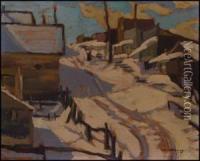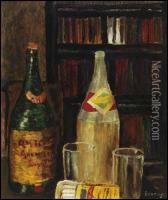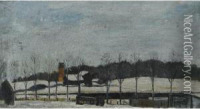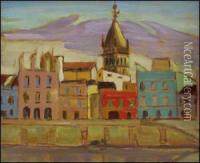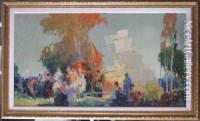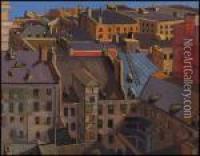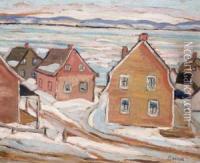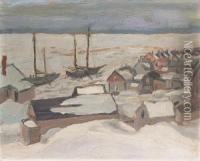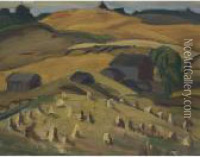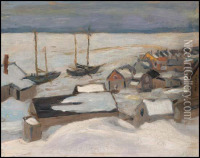Frederick Grant Banting Paintings
Sir Frederick Grant Banting was a Canadian medical scientist, physician, painter, and Nobel laureate noted for his contributions to the discovery of insulin and its therapeutic application in diabetes. Banting was born on November 14, 1891, in Alliston, Ontario, Canada. He attended the University of Toronto, where he studied medicine and graduated in 1916. His studies were interrupted by World War I, during which he served in the Canadian Army Medical Corps. In 1918, he was wounded in France and later awarded the Military Cross for heroism under fire.
After the war, Banting returned to Toronto and began a small medical practice. He also worked as a demonstrator in pharmacology at the university. His interest in diabetes was piqued after reading an article on the pancreas, leading him to pursue research on the role of the pancreas in relation to the disease. In 1921, together with medical student Charles Best, Banting began experiments on the extraction of insulin from pancreatic tissue. They successfully isolated the hormone, which was then used to control blood sugar levels in diabetic dogs. Their work paved the way for the purification of insulin by James Collip, making it suitable for human treatment.
For this groundbreaking work, Banting and John James Rickard Macleod, who provided laboratory facilities and assistance, were jointly awarded the Nobel Prize in Physiology or Medicine in 1923. Banting shared his part of the prize with Charles Best. Following the Nobel win, Banting's career was devoted to research in medical science. He continued to work on diabetes and also expanded his interests to cancer and silicosis. He was knighted by King George V in 1934.
In addition to his medical pursuits, Banting had an interest in art. He began painting in the 1920s as a hobby and became friends with prominent Canadian artists, including A.Y. Jackson of the Group of Seven. Banting's paintings were exhibited in his lifetime and continue to be recognized for their artistic merit.
Banting's life was cut short at the age of 49 during World War II when he died in a plane crash in Newfoundland on February 21, 1941, while on a wartime mission. His legacy endures in the Banting and Best Department of Medical Research at the University of Toronto, the Banting Research Foundation, and various institutions and awards named in his honor, including the prestigious Banting Medal for Scientific Achievement awarded by the American Diabetes Association.
